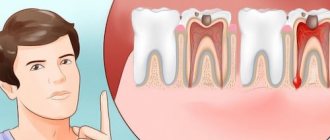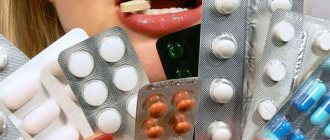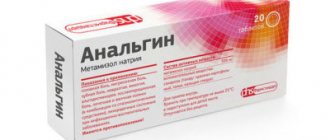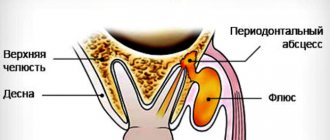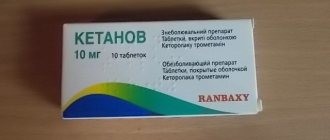Effect of the drug
Paracetamol has been considered a popular and sought after pain reliever and antipyretic for half a century. Efficiency is associated with uniform distribution across tissues.
The active ingredients block the action of prostaglandins, which are sources of pain. This eliminates moderate pain. The drug also copes well with fever. This serious symptom can indicate a variety of infectious and inflammatory diseases.
Before taking it, you should consult your doctor and read the instructions to prevent side effects. You should strictly follow the dosage, otherwise complications related to the functioning of the heart and kidneys may occur. The risk increases when taken concomitantly with alcoholic beverages.
Signs of poisoning do not appear immediately. Initially, your general well-being may only slightly deteriorate.
Contraindications
This substance has a number of contraindications that you need to familiarize yourself with before giving it to your child:
- personal intolerance to the components included in the composition
- problems with the liver or kidneys
- diseases associated with the gastrointestinal tract
- blood diseases.
Attention: to avoid complications, it is necessary to consult a doctor, especially if the child is small and has not been given the drug before.
In what cases is it effective?
The drug has an effect in various febrile conditions associated with elevated temperature. Particularly effective for colds.
Paracetamol is able to cope with pain of varying intensity. It is often used for headaches and toothaches. Helps women with pain during menstruation.
The drug is allowed to be taken by pregnant women and babies from 3 months. For children there are baby candles and syrup. The product is often given to babies who are starting to cut their teeth.
A little more about pharmacy medications for toothache during pregnancy
The expectant mother needs to understand: any medicine she takes can affect her baby. Of course, the effect of most drugs on fetal development remains unstudied, but that is precisely why it is worth minimizing the drug load on the pregnant woman’s body. The baby is especially vulnerable in the first trimester of pregnancy, so not a single pill should be taken during this period without a doctor’s prescription.
If the pain is not very strong, you should try to get rid of toothache during pregnancy using folk remedies. If traditional methods do not help, it makes sense to turn to pharmaceutical drugs, but start with children's gels. Most strong medications for toothache during pregnancy are taken once (!) and only when absolutely necessary.
To prevent toothache during pregnancy from suddenly overtaking a woman, she needs to eat right, brush her teeth regularly and take care of her health. If your gums become very sensitive and begin to bleed periodically, you should rinse your mouth daily with oak bark tincture. If one of the teeth begins to “weak”, you should consult a dentist as soon as possible.
Back
Paracetamol for fever
Paracetamol can be used at a temperature if it has reached 38.5 degrees or higher. This is explained by the fact that elevated temperature has a negative effect on harmful microorganisms, and, therefore, allows you to recover faster.
It should be taken strictly according to the instructions, without exceeding the dosage. The tablet should be taken with a sufficient amount of drinking water, which will speed up the absorption of the active ingredient and minimize the negative impact on the liver.
Single dose 400-500 mg. If the temperature reaches 40 degrees, the dose can be doubled.
For children and adults, a single dose is determined based on weight. A child can take the drug 4 times per day. Duration of treatment – up to 3 days.
Method of administration and dosage for toothache in children
Paracetamol for toothache is given in the same way as for any other, depending on the type of drug and age:
- tablets from the age of two years are given based on the weight of a child up to 15 kilograms - 500 mg, from 15 kg to 25 kg - 1000 mg, up to 30 kilograms - 1500 mg, over 30 kg - 2000 mg
- syrup can be used from three months at the rate of up to a year no more than 5 mg, from five years no more than 10 mg, if more than 12 years, then taking the drug can consist of 30 mg - these are the maximum single doses and it is not recommended to exceed them
- suppositories are used depending on age, from 6 months until the weight reaches 10 kg, they are used with a minimum volume (0.80 mg), for children who weigh more than 10 kg, suppositories are recommended, which contain paracetamol in the amount of 1, 8 mg.
The substance should be given in accordance with the instructions to avoid overdose.
How to take for headaches
The medicine is quite effective for headaches. But when taking it, it is worth considering some features. The tablets should not be taken on an empty stomach. Before taking the pill, you need to have at least something to eat. If there is no appetite, then you can drink a glass of water.
You need to take the tablet with plain water. It is not recommended to use coffee and tea, as the effect may be reduced to zero. If unbearable pain is felt, then you can take 1000 mg of the drug at a time. You can take the medicine again after at least 4 hours. You can take no more than 4 tablets per day. This regimen does not apply to pregnant women (the dosage should be 2 times less).
Paracetamol is prescribed for migraines, which are characterized by persistent, throbbing pain, usually in one part of the head.
If the headache is associated with stress or a nervous condition, then 1 tablet is enough.
Paracetamol for children
An overdose of paracetamol can cause liver failure, which may lead to the need for a liver transplant or death. In addition, acute pancreatitis is observed, accompanied by liver dysfunction and hepatotoxicity.
In case of an overdose of Paracetamol for children, even if the patient feels well and there are no significant symptoms of overdose, it is necessary to stop using the drug and immediately consult a doctor for medical assistance.
Symptoms
The hepatotoxic effect in adults occurs when taking paracetamol in an amount of 10 g or more, in children - when taking more than 125 mg/kg of the child’s body weight. If there are factors that influence the toxicity of paracetamol to the liver (see sections “Interaction with other drugs”, “Special instructions”), liver damage may occur after taking paracetamol in an amount of 5 g or more. With long-term use in excess of the recommended dose, hepatotoxic and nephrotoxic effects (renal colic, nonspecific bacteriuria, interstitial nephritis, papillary necrosis) may be observed.
During the first 24 hours after an overdose, the following symptoms may appear: nausea, vomiting, stomach pain, impaired glucose metabolism (loss of consciousness, sweating, dizziness), pale skin, anorexia, metabolic acidosis, impaired carbohydrate metabolism. After 1-2 days, signs of liver damage are determined (pain in the liver area, increased activity of “liver” enzymes).
In severe cases of overdose, encephalopathy (impaired brain function), bleeding, hypoglycemia, cerebral edema, and even death may develop as a result of liver failure. It is also possible to develop acute renal failure with acute tubular necrosis, the characteristic signs of which are pain in the lumbar region, hematuria (admixture of blood or red blood cells in the urine), proteinuria (increased protein in the urine), while severe liver damage may be absent. There have been cases of heart rhythm disturbances and pancreatitis.
Treatment
If you suspect an overdose of Paracetamol for children, even in the absence of pronounced first symptoms, you must stop using the drug and immediately consult a doctor for medical assistance.
During the first hour after an overdose, it is recommended to lavage the stomach and take enterosorbents (activated carbon, polyphepan). The level of paracetamol in the blood plasma should be determined, but not earlier than 4 hours after an overdose (earlier results are unreliable).
Administration of acetylcysteine within 24 hours of an overdose. The maximum protective effect is provided during the first 8 hours after an overdose; over time, the effectiveness of the antidote drops sharply. If necessary, acetylcysteine is administered intravenously. If there is no vomiting, methionine may be administered before the patient is admitted to the hospital. The need for additional therapeutic measures (use of methionine, intravenous administration of acetylcysteine) is determined depending on the concentration of paracetamol in the blood, as well as the time elapsed after its administration.
Treatment of patients with severe liver dysfunction 24 hours after taking paracetamol should be carried out in conjunction with specialists from a poison control center or specialized liver disease department.
Paracetamol for colds
When a cold appears, you need to provide timely help. Otherwise, the condition may worsen. The first signs of the disease are excessive weakness and fatigue. During ARVI, a runny nose, cough, fever, muscle and joint pain appear.
Paracetamol will reduce the symptoms of the disease and improve the patient's condition.
Very often the drug is prescribed to adults and children over 12 years of age in tablet form. If the medicine is to be taken by children, then it is worth considering an important factor - the child must weigh more than 49 kg.
Babies up to one year old can be given the drug in the form of a suspension, after a year - in the form of syrup.
In many cases, adults take 1 tablet 4 times a day. Duration of treatment – no more than 3 days.
Interaction with other drugs
When using paracetamol and other drugs simultaneously, you should know:
- consumption with socilates can lead to the formation of tumors in the bladder
- together with barbiturates, ethanol will lead to toxic effects on the liver, and will also reduce the effect of paracetamol itself
- Non-steroidal anti-inflammatory drugs can cause kidney problems
Attention: if any other medications are given, then under no circumstances should you start giving paracetamol for toothache without consulting a doctor. And you should definitely study the instructions for its use.
How to take for toothache
Often toothache catches a person at the most inopportune moment. Not in all cases it is possible to go to the dentist right away. To eliminate unbearable pain and improve the condition, you can take Paracetamol.
The drug is able to stop the production of prostaglandins, which are the source of pain. The tooth stops hurting, but the inflammatory process continues to spread. If the toothache does not go away, then you should not hesitate to go to the dentist.
You need to take the medicine after meals. Relief is observed after about 15-20 minutes. You can take the pill again no earlier than after 4 hours. You can take 4 tablets per day. Paracetamol can be taken for no more than 3 days.
Folk remedies for toothache during pregnancy
Since it is important for a pregnant woman to take care of the safety of the unborn child, it is mainly worth paying attention to folk remedies for toothache during pregnancy. These include:
- Gargling with herbal decoctions and infusions. To prepare such a decoction, you can use chamomile, plantain, calendula, sage or St. John's wort. If you don’t have herbs at home, you can prepare a regular saline solution. Rinsing should be done as often as possible. It is advisable to warm up a small amount of decoction before use. It is prohibited to rinse your mouth with infusion from the refrigerator: this will not only increase the pain, but can also provoke the development of inflammation.
- "Star". Universal balm “Zvezdochka” is an excellent folk remedy for toothache during pregnancy. A small cotton swab is soaked in vegetable oil (sunflower or olive), after which a little “Star” is applied to its end. The tampon is pressed against the gum (the root of the diseased tooth).
- Clove powder. If you have a powdered version of this spice at home, just sprinkle cloves on the inflamed area of the gum so that the pain begins to subside.
- Garlic. There are 2 ways to use garlic for toothache. The first method involves applying a piece of garlic directly to the sore gum. In the second option, it is recommended to crush a clove of garlic, turning it into a paste, and then apply a little of this substance to the wrist (where the veins stand out). If toothache is noted on the left, the paste is applied to the right wrist; when the pain is felt on the right - to the left.
- Plantain. This effective folk remedy for toothache during pregnancy is applicable only in the summer, when you can find fresh plantain on the street. A small leaf of this plant must be thoroughly washed and then rolled with a rolling pin or gently beaten with a hammer until the juice is released. When the sheet becomes soft and moist, it must be rolled into a thin tube and placed in the ear on the side of the diseased tooth. Surprisingly, the pain will soon begin to subside.
- House plants. In the fight against toothache, such common plants as aloe, kalanchoe and pelargonium are quite effective. A small piece of a leaf from any of these plants is peeled to extract the juice, and then pressed onto the diseased area.
- "Tooth drops." This drug is sold in pharmacies, but it is based only on natural substances: in its composition you will find valerian, camphor and mint oil. If a piece of cotton wool soaked in this solution is applied to a sore tooth, the pain will gradually subside. At the same time, “Tooth drops” are an excellent antiseptic and sedative.
Features of use by pregnant women
Pregnant women often complain of toothache. Most often, the cause is caries, which appears due to the fact that calcium in a woman’s body is directed to a greater extent towards the structure of the bone tissue of the unborn baby. This causes various problems, particularly with teeth.
Paracetamol is allowed to be taken by pregnant women, but precautions should be taken. The active substance can penetrate the placenta. The minimum dose of the medicine can be taken in the 2nd trimester, when the child’s organs are already formed.
Before taking it, you should consult your doctor. You can drink no more than 1 tablet per day. Repeated use may cause harm to the fetus.
Why does toothache occur during pregnancy?
It is worth noting that the occurrence of toothache during pregnancy is a fairly common occurrence. During pregnancy, the maternal body works in a special mode: when distributing resources, preference is given to nutrition and protection of the fetus, so the health of the expectant mother may be weakened. First of all, nails, hair and teeth are affected.
The main causes of toothache during pregnancy include the following factors:
- Lack of nutrients. A deficiency of individual microelements can be caused by toxicosis or poor nutrition. Most women during pregnancy experience an aversion to certain foods, including protein foods. In addition, even with a nutritious and balanced diet, a woman may experience a deficiency of calcium and some vitamins, because they are used to build the child’s skeleton.
- Increased level of acidity in the mouth. This is especially true for toxicosis. Under the influence of acid, teeth can be destroyed more quickly.
- Changes in hormonal levels. Hormonal disasters always affect the condition of bones and hair.
- Decreased immunity. A pregnant woman's body is less resistant to various infections, so even minor hypothermia or a wound on the gum can cause ginginitis or periodontitis.
- High tissue sensitivity. During pregnancy, both the teeth themselves and the mucous membranes of the mouth become too sensitive: cold, hot or poorly chewed food can lead to injury to the gums and palate. In addition, there is a weakness of the vascular system, due to which the gums of pregnant women are more likely to bleed and become inflamed. All this becomes the main cause of toothache and rapid development of caries during pregnancy.
- Improper oral care. Regular teeth brushing should not be forgotten even during severe toxicosis. It is also important to change the brush to a softer one (remember the increased sensitivity of the gums) and rinse your mouth more often with special solutions.


